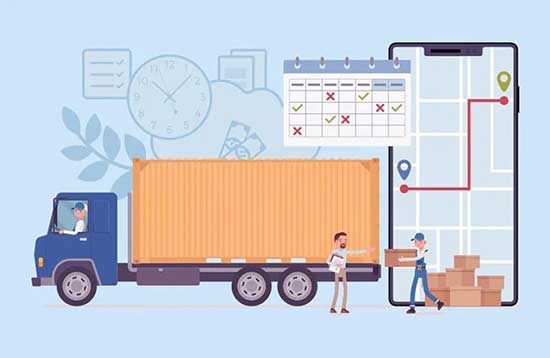The world of logistics is moving to an on demand…call it an ‘Uberized’ model… where owning traditional assets is no longer a requirement to be a viable logistics company. A competitor to a traditional logistics service provider need not just be another LSP, but can be any platform provider or technology company that can aggregate supply and demand in one place and meet a customer’s requirement. This could look ideal or theoretical to a few but it is not impossible. To compete, all LSPs need to be equipped with the best possible technologies, including an integrated system, to manage all of the logistical and business complexities found in the global supply chain.
For the Uberized model, we look at the concept of on-demand logistics with anytime access from anywhere, using mobility and other prevalent technologies. As the idea of Uberization in logistics evolves, essentially anyone with mobile phone access can become a carrier / transporter, upending and changing the traditional logistics market of which we are familiar with.
Let’s look at a real example of the on demand economy featuring Uber and Walmart. The retail behemoth is deepening their partnership with Uber as their online grocery delivery partner. In the Walmart model, online orders are sent to the local store for picking and packing. An Uber driver is then called to make the delivery directly to the customer. This service is expanding quickly, providing evidence that the Uberization of logistics is not just a theory, but reality. In effect, anyone with a mobile phone and a decent vehicle can be in the logistics business.
An asset based LSP owns their assets, including trucks, warehouses, and distribution centers. Conversely, a non-asset based logistics service provider does not own their assets. They use freight brokers, carrier relationship management programs and other technologies to negotiate the best deals with carriers, warehouses and distribution centers.
Some feel that non-asset based LSPs have greater opportunities to develop a more cost effect logistics solution in that they are free to negotiate with a wide range of service providers. Asset based logistics service providers must consider the effective use of their assets in their service offerings and that may be less cost effective and stifle creativity. Couple the proliferation on non-asset based LSPs with leading edge technologies and one can envision a dramatic shift in how supply chains or managed. The landscape is certainly changing led buy the evolving needs of the on-demand customers.
Logistics service providers today battle a number of barriers impacting customer satisfaction and their own financial performance. They often lack a 360-degree planning and execution process, have inadequate resource and asset utilisation, and a minimal end-to end visibility. In addition, the lack of a fully integrated system and a dependence on legacy systems complicate the task of managing today’s complex global logistics environment.
Streamlined technology plays a key role in tackling the Uberization of logistics. LSPs who depend on integrating multiple technologies during the shipping process are at a financial and operational disadvantage. Service providers need a technological partner who can provide a ‘customer first’ cloud based integrated system that allows for full functional connectivity, end-to-end visibility to track process efficiency, optimisation of asset and resource utilisation, planning and predictive analytics.
Ramco’s Logistics Software, with its use of command center, provides a comprehensive solution to orchestrate the entire logistics process. They provide a complete overview of the entire supply chain landscape by watching every step of the process, identifying and predicting risk, assessing all possible solutions, and removing barriers to customer satisfaction. Ramco’s integrated system creates an end-to-end process for order management, warehousing, transportation, and hub management, all the way to billing, human resources, and finance.
The Uberization of logistics is not a passing fad, but a reality in the exploding on-demand market place. All LSPs need to determine their best path forward with a solid technology infrastructure to provide a greater chance at success.








